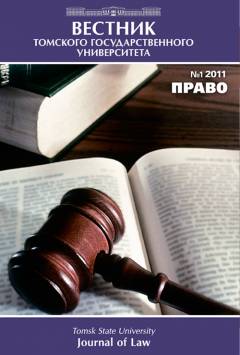Criminological characteristics of recidivism
Recidivism is an indicator of the imperfection of the system of punishments, the practice of their execution, as well as the stability of anti-social attitudes of those who commit crimes. The purpose of this study is to conduct a criminological analysis of recidivism in the Russian Federation (to determine the level, structure and dynamics) in the period from 2006 to 2018 and on this basis to establish trends in its development. Criminological characteristic of recidivism includes quantitative and qualitative analysis of the totality of crimes committed by persons who have previously committed crimes, after the application of criminal law measures to them for previous crimes, as well as the totality of these persons themselves. The study led to conclusions about an increase in both the absolute and relative indices of recidivism: the number of crimes committed by persons who had previously committed offences increased by 18.4 per cent in the period under study, and the recidivism rate increased by 15.3 per cent. The recidivism rate doubled from 13.9% in 2006 to 31.6% in 2018. There has been an increase in the number of persons who had previously committed crimes, while the criminal activity of persons who were exempted from criminal liability for previously committed crimes on non-rehabilitation grounds has also increased among the detected offenders. Minor offences accounted for the largest proportion of recidivism: 54.8 per cent. Offences of medium gravity accounted for 26.2 per cent, serious offences for 15 per cent and especially serious offences for 4 per cent. Recidivism was mainly represented by crimes against property: their share was 42.7%; crimes against persons 16.6%, and against public health 11.9%. The highest proportion of those previously convicted of robbery was observed (52.1%). High recidivism rate was also observed among drug offenders - 28-30%, and, as a rule, it was special recidivism, i.e. recidivism by those who had previously committed homogeneous (identical) crimes. Criminal record statistics during the reviewed period showed a decrease in the absolute number of convicts, while at the same time an increase in the proportion of those with an unexpunged and unexpunged criminal record. In 2018, the number of convicts with an unexpunged and unexpunged criminal record at the time of the offence was 231583, or 35.2% of all convicts Among those convicted, the proportion of those who have been sentenced to imprisonment for the third time or more has increased. Whereas in 2007 their share was 20.2%, in 2018 it was 36.1%. - At the same time, the share of first-time offenders decreased from 53.7% to 45.8%.
Keywords
recidivism, criminality, criminological characteristicAuthors
| Name | Organization | |
| Filippova Olga V. | East Siberian State University of Technology and Management | ovalfilippova@yandex.ru |
References

Criminological characteristics of recidivism | Tomsk State University Journal of Law. 2020. № 38. DOI: 10.17223/22253513/38/9
